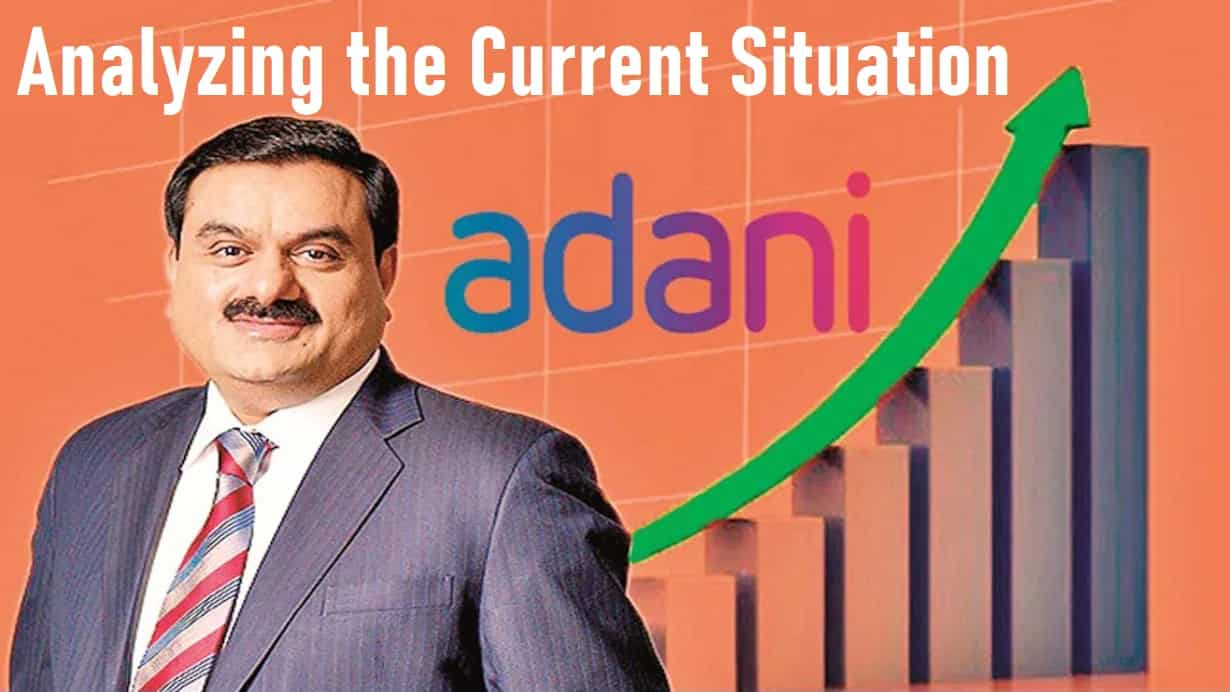In January 2023, the Hindenburg report sent shockwaves through the financial world, wiping out a staggering $90 billion of wealth from the Adani Group, one of India’s largest conglomerates. The report triggered corrections of up to 70% in some Adani stocks, with some yet to fully recover, trading at significant discounts from their peak values. Despite apparent clean chits from the Supreme Court, concerns continue to linger, and the controversy has only deepened with the release of Hindenburg 2.0. In this comprehensive article, we will dissect the Adani Group controversy, explore the latest developments in Hindenburg 2.0, and analyze the potential impact on the Indian stock markets.
The Adani Saga: A Brief Recap
To comprehend the intricacies of the Adani Group controversy, let’s first take a quick trip down memory lane. The saga began in January 2023 when Hindenburg, a US-based short seller, released a report targeting the Adani Group. Short sellers, like Hindenburg, profit when a stock’s price declines, making them vigilant watchdogs of corporate behavior. Hindenburg’s primary allegation was that the Adani family had significantly boosted their wealth by inflating their stock prices through a mechanism known as “controlling the free float.” This process involves manipulating the number of shares available for public trading, effectively controlling their value. The report claimed that the Adani family had orchestrated a meteoric rise in their wealth through this tactic.
The explosive revelation in the Hindenburg report was that almost 85% of Gautam Adani’s wealth had been amassed in just three years. This remarkable surge in wealth raised eyebrows, especially considering the economic challenges and market fluctuations during that period.
Example of Wealth Accumulation
- Let’s consider a hypothetical scenario: Adani owns 75% of Adani Enterprises, whose stock is trading at ₹100 in 2020.
- If the stock price soars to ₹300, a threefold increase, Adani’s wealth proportionally triples.
- This dramatic rise in stock price significantly contributes to Adani’s wealth.
The Mechanics of Stock Pumping
Understanding the mechanics of stock pumping is crucial to grasp the allegations against the Adani Group. In India, regulatory authorities limit promoter holdings to 75%, ensuring that at least 25% of a company’s shares are available for public trading. This safeguards against manipulation and artificially inflated stock prices.
However, the key issue raised in the Hindenburg report was that the Adani Group allegedly controlled not only their 75% but also a significant portion of the remaining 25%. They purportedly achieved this by creating a complex web of investment entities, both within India and internationally. By controlling a substantial portion of the free float, they could influence stock prices in their favor, artificially boosting the value of their holdings.
Hindenburg 2.0: The OCCRP Report
The controversy surrounding the Adani Group intensified with the release of Hindenburg 2.0, a report published by the Organized Crime and Corruption Reporting Project (OCCRP). This international investigation organization shed further light on the Adani Group’s alleged financial improprieties. The headline from the OCCRP report reads, “The Secret Paper Trails Reveal Hidden Adani Investors.”
Adani’s Complex Corporate Structure
To understand the allegations in the OCCRP report, it’s essential to grasp the intricate corporate structure of the Adani Group. The report exposes two individuals named Ali and Chang, who are alleged to have worked on behalf of Vinod Adani, Gautam Adani’s brother. Ali is reportedly based in the Middle East, while Chang is based in Taiwan. Together, they are said to have created a Russian doll-like structure of companies, complete with parallel sets of books—one for regulators and one for stock manipulation.
Creation of Parallel Investment Entities
Ali and Chang are accused of establishing various investment entities, including Lingo Investments, Gulf Asia Trade and Investment, and Middle Eastern Ocean Trade and Investment. In addition, they created a layer of Mauritius-based funds, such as EM Resurgent Fund and Emerging India-Focused Funds. These entities reportedly acquired substantial stakes in Adani Group companies, allegedly enabling stock price manipulation.
The Nature of OCCRP and Hindenburg
As the controversy deepens, questions arise about the nature and credibility of OCCRP and Hindenburg. Are these organizations acting as neutral investigators, or do they have ulterior motives? Let’s examine their backgrounds:
OCCRP
The Organized Crime and Corruption Reporting Project (OCCRP) is not exclusively focused on the Adani Group. They have targeted various organizations and individuals worldwide in their investigative work. This broader scope suggests that OCCRP operates independently and does not selectively target specific entities.
Hindenburg
Hindenburg, on the other hand, is an investment firm specializing in short selling. Their primary objective is financial gain through identifying and exposing negative aspects of companies. While their motives might include profit, their reports are subject to scrutiny and can influence market sentiment.
Deloitte’s Resignation
Deloitte, a reputable auditing firm, resigned from its role as Adani Group’s auditor shortly before the controversy erupted. This move raised concerns, as it indicated that Deloitte might have encountered issues during its auditing process, prompting their withdrawal.
The SEBI and Supreme Court Involvement
Regulatory bodies like the Securities and Exchange Board of India (SEBI) and the Supreme Court have become central players in the Adani Group controversy. Here’s an overview of their roles and actions:
SEBI’s Investigation
SEBI had initiated investigations into allegations of wrongdoing by the Adani Group. However, the findings were inconclusive, with SEBI stating that they could not definitively prove the allegations. This lack of clarity implies that further investigations may be warranted.
Supreme Court Expert Panel
The Supreme Court formed an expert panel consisting of legal, banking, and business experts to examine SEBI’s handling of the Adani case. The panel’s preliminary report suggested that SEBI had long harbored suspicions that some public shareholders might be fronts for the Adani promoters. However, this does not imply a clean chit for the Adani Group. Investigations are ongoing.
Analyzing the Controversy’s Impact
The Adani Group controversy has far-reaching implications, not only for the conglomerate but also for the Indian stock markets and the political landscape. Here’s a breakdown of these impacts:
1. Impact on Adani Stocks
- Investors holding Adani stocks may face uncertainty regarding the group’s financial practices.
- With the controversy ongoing, forming a solid investment thesis for Adani stocks becomes challenging.
2. Impact on the Broader Market
- The controversy surrounding the Adani Group can affect overall investor sentiment, potentially influencing the broader market.
- The political implications of the controversy may impact the market, particularly in the lead-up to elections.
3. Political Implications
- The controversy has political ramifications, as Adani’s perceived proximity to certain political parties may lead to heightened political discourse.
- The opposition may leverage the issue to gain political advantage.
4. Short-Term Market Outlook
- In the short term, it’s unlikely that the Adani controversy will result in significant market disruptions.
- Political maneuvering and legal complexities may delay any concrete outcomes until after the elections.
5. Long-Term Concerns
- Post-election, the situation may evolve, potentially leading to more significant developments.
- Investors should remain vigilant and consider hedging strategies to protect their portfolios.
Conclusion
The Adani Group controversy, ignited by the Hindenburg report and further fueled by Hindenburg 2.0 and the OCCRP report, continues to cast a shadow over the conglomerate. While the allegations of financial impropriety persist, regulatory bodies like SEBI and the Supreme Court are conducting investigations to unearth the truth. As investors navigate this complex terrain, it’s essential to remain informed, stay attuned to developments, and adopt risk-mitigation strategies to safeguard their financial interests. The Adani saga is far from over, and its ultimate impact on the Indian stock markets remains uncertain.











